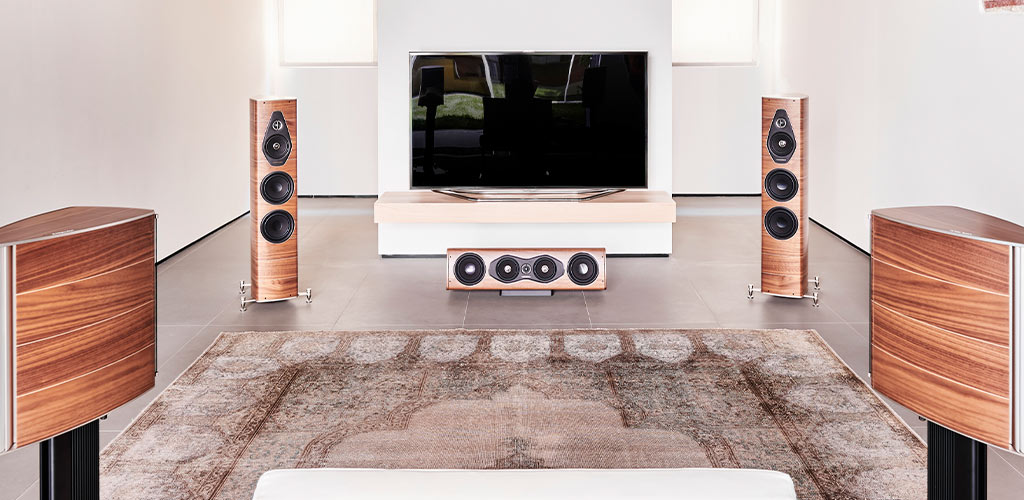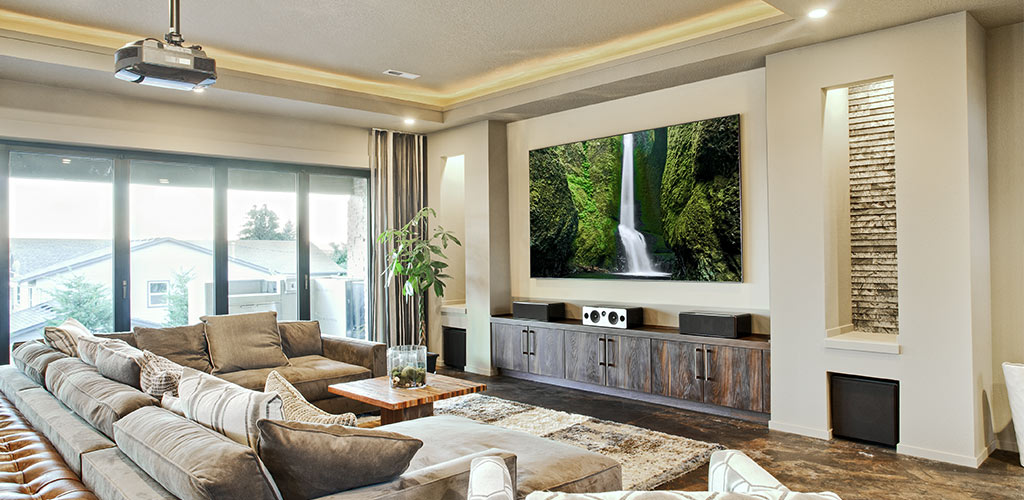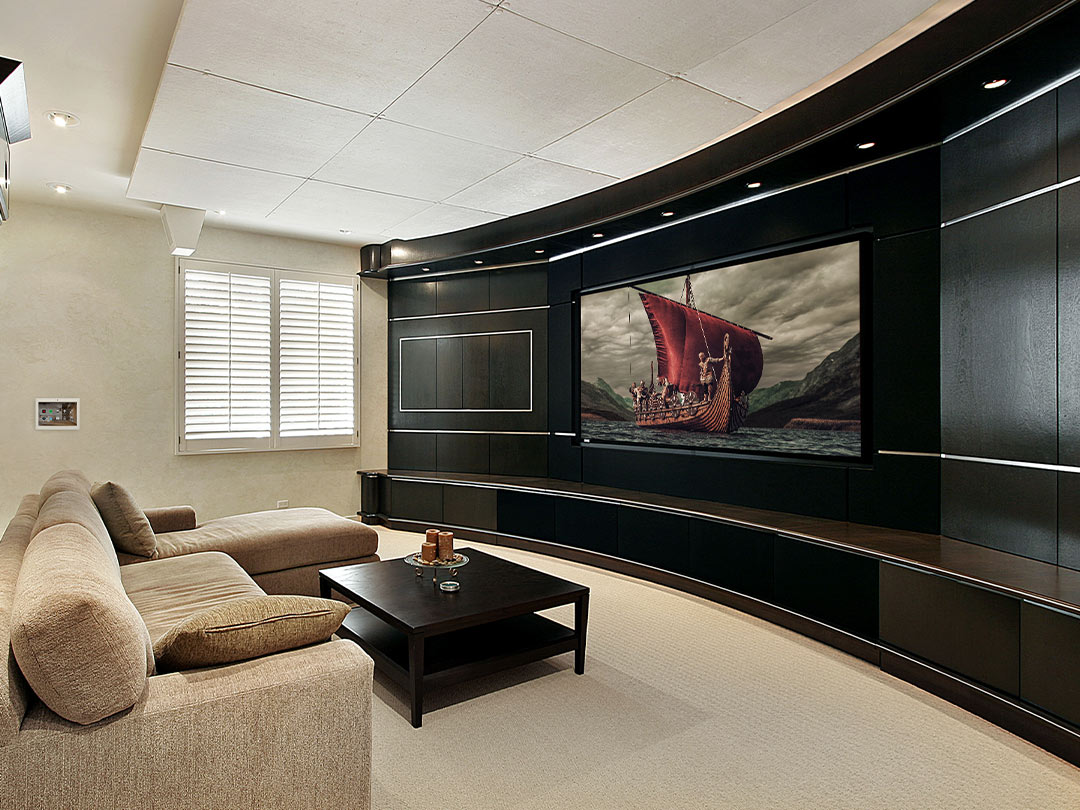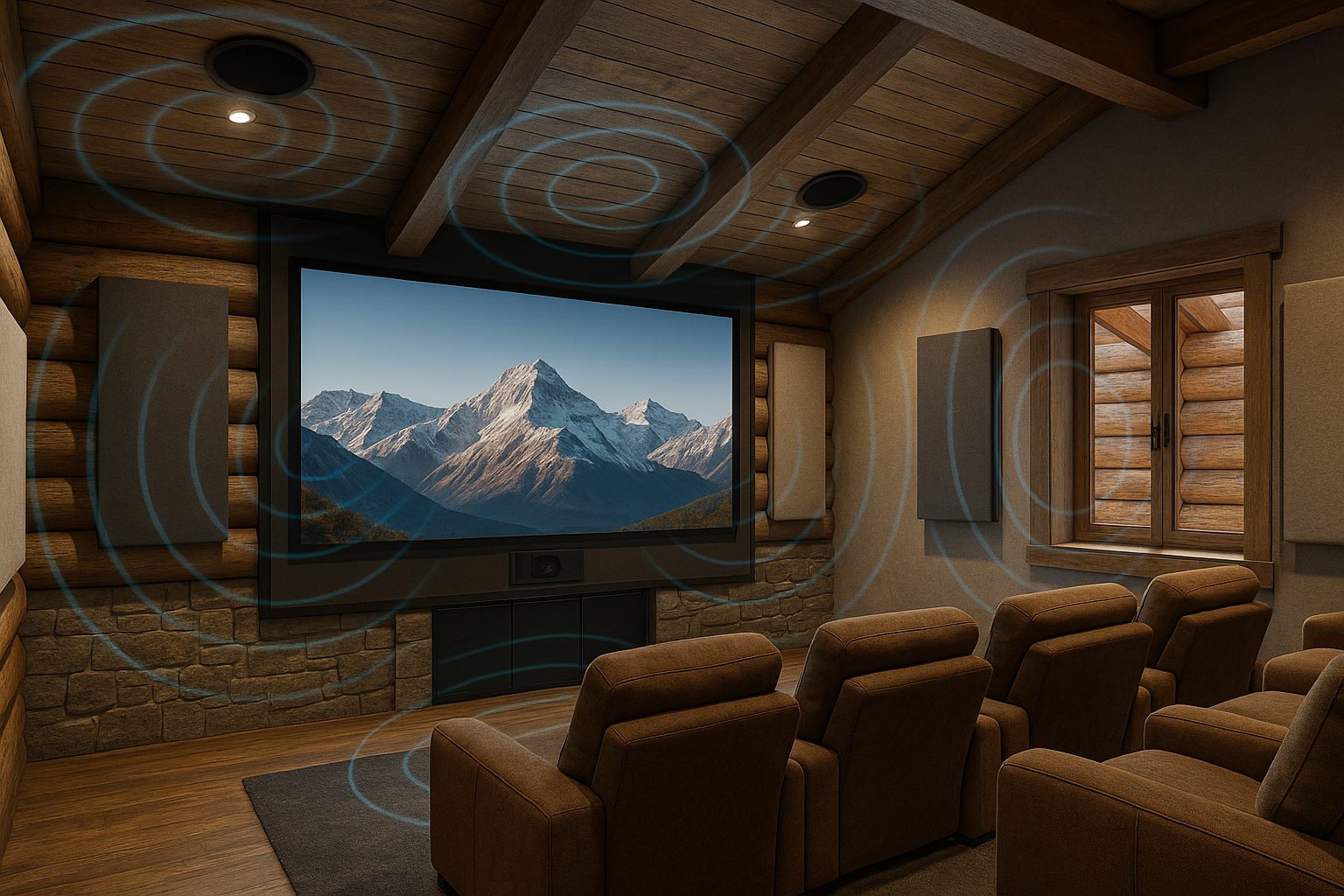The dream of a home theater may feel entirely out of reach when visualizing a 1,000 square foot room embellished with luxurious armchairs and a floor-to-ceiling 4k screen. However, any space can be transformed into a cozy home theater that fits within your budget.
After measuring the dimensions of your available room or space, you’ll be able to determine the appropriate equipment that fits your home theater, including the size of your screen and the number of speakers. Here are five tips for building a home theater perfect for your needs.
Understand Your Seating Distance
A bigger screen doesn’t necessarily mean better. At the beginning of your home cinema endeavor, use your available seating distance to calculate the size of your screen by multiplying your seating distance by 0.84. If you have 5-feet (60 inches) available, then multiply 60 x 0.84 to equal a 50-inch screen. You’ll be able to witness all the action up close without straining your neck or your eyes.

Count Your Speakers
The majority of home cinema setups incorporate seven speakers, but you need to determine how much space you have available. It is possible to include all seven speakers by embedding them in the walls and ceiling if you have the budget for the wiring renovations. At the very least, include five speakers to achieve a surround-sound effect. For a more budget-friendly option, install shelves for your speakers so you won’t have to sacrifice any floor space!
Select a Receiver
Now that you have your speakers, it’s time to power them with a receiver. Luckily, having a smaller space means it’s much easier to flood your room with sound. As you purchase a receiver, ask retailers about the unit’s power supply to understand the amount of power your receiver will create. Because you’re working with a smaller space, you can save money by choosing a receiver with a lower power supply.
Choose Your Display Type
You know that HD and 4k TVs are available in 70, 80, 90, and 100-inch screens, but you won’t have to sacrifice quality for a smaller screen. It’s also important to consider your space’s ambient light; an LCD TV can generate a vivid image that overpowers the daylight streaming in your windows. If you’re utilizing a windowless space, you could purchase a projector for a more budget-friendly option, and instead of a screen, all you need is a white wall.

Consider Installing a Projector
If you’ve determined that a projector is the right choice for your home theater, there are a plethora of terms that may be confusing, such as DLP, LCD, CLOS, lumens, lens shift, 3D, 4K, anamorphic, and contrast ratio. Here’s our quick guide to selecting a projector.
Lens Shift – This feature allows you to increase the flexibility of your projector placement. High-quality home theater projectors use vertical and horizontal lens shift, which will maximize your control capabilities in adjusting your image location.
Auto-iris – To brighten an image’s light and deepen the blacks, you’ll want to use a projector’s auto-iris. This isn’t necessary if you have full light control over your home theater’s space, but in case of stray light, a superior auto-iris is essential. Conduct thorough research before purchasing because a cheaply-made auto-iris can result in a noisy projector.
ANSI lumens – The ANSI lumens determines the brightness of your projector where higher lumens correlates with a brighter picture. To choose a value that best fits your space, evaluate your room’s lighting. A very high lumen value can result in black and light levels that appear washed-out. Most projectors are equipped with 2,000 lumens, and dipping below 1,500 won’t create a visible image in a well-lit room.
A home theater of any shape or size will leave you and your family enthusiastic about movie night. If you’re thinking about converting a spare room, walk-in closet, or spacious nook into your new home cinema, give our team of experts at Xssentials a call to get started today!



